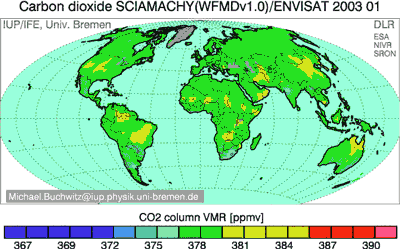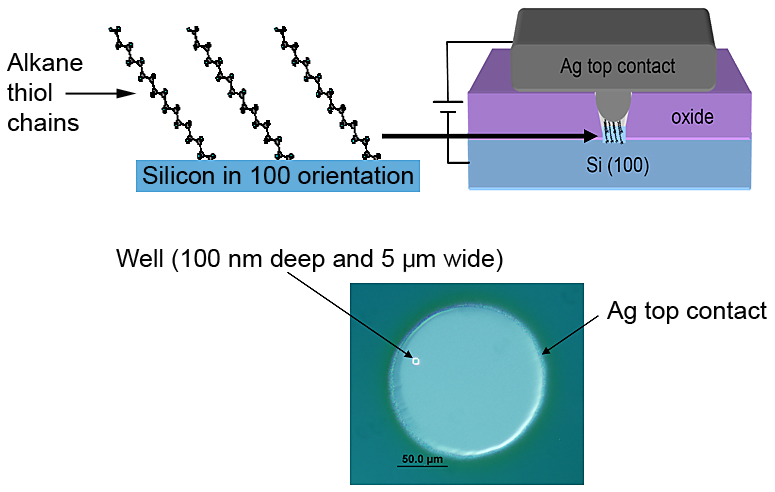While significant gaps remain in our total knowledge of the extent of carbon dioxide’s sources, such as fires, volcanic activity and the respiration of living organisms, and its natural sinks, such as the land and ocean, it is known that more than 30 billion tons of extra carbon dioxide (CO2) is released into the atmosphere annually by human activities, mainly through the burning of fossil fuels.
According to the latest report by the Intergovernmental Panel on Climate Change (IPCC), this increase is predicted to result in a warmer climate with rising sea levels and an increase of extreme weather conditions. Predicting future atmospheric CO2 levels requires an increase in our understanding of carbon fluxes.
Using data from the SCIAMACHY instrument aboard ESA's Envisat environmental satellite, scientists have for the first time detected regionally elevated atmospheric carbon dioxide – the most important greenhouse gas that contributes to global warming – originating from manmade emissions.
 This animation of carbon dioxide (CO2) shows how our planet ‘breathes’. Each year huge amounts of CO2 are taken up by the growing vegetation in spring and summer and are to a large extent released again during the following autumn and winter when part of the vegetation dies and decays. This is seen in the animations by the up and down of the measured CO2 once per year. By looking carefully at the animation, it is possible to see that the CO2 levels are rising by about 0.5-1 percent from year to year. Dr. Michael Buchwitz and Oliver Schneising from the Institute of Environmental Physics (IUP) at the University of Bremen in Germany based produced this animation using Envisat SCIAMACHY observations from 2003 to 2005. Credits: IUP/IFE, Univ. Bremen
This animation of carbon dioxide (CO2) shows how our planet ‘breathes’. Each year huge amounts of CO2 are taken up by the growing vegetation in spring and summer and are to a large extent released again during the following autumn and winter when part of the vegetation dies and decays. This is seen in the animations by the up and down of the measured CO2 once per year. By looking carefully at the animation, it is possible to see that the CO2 levels are rising by about 0.5-1 percent from year to year. Dr. Michael Buchwitz and Oliver Schneising from the Institute of Environmental Physics (IUP) at the University of Bremen in Germany based produced this animation using Envisat SCIAMACHY observations from 2003 to 2005. Credits: IUP/IFE, Univ. Bremen
 At 3 Cases In 6 Months, Monkeypox In The US Is Effectively Contained
At 3 Cases In 6 Months, Monkeypox In The US Is Effectively Contained Brown Fat’s “Off-Switch” Isn't A New Ozempic Diet Exploit
Brown Fat’s “Off-Switch” Isn't A New Ozempic Diet Exploit Opioid Addicts Are Less Likely To Use Legal Opioids At The End Of Their Lives
Opioid Addicts Are Less Likely To Use Legal Opioids At The End Of Their Lives More Like Lizards: Claim That T. Rex Was As Smart As Monkeys Refuted
More Like Lizards: Claim That T. Rex Was As Smart As Monkeys Refuted











